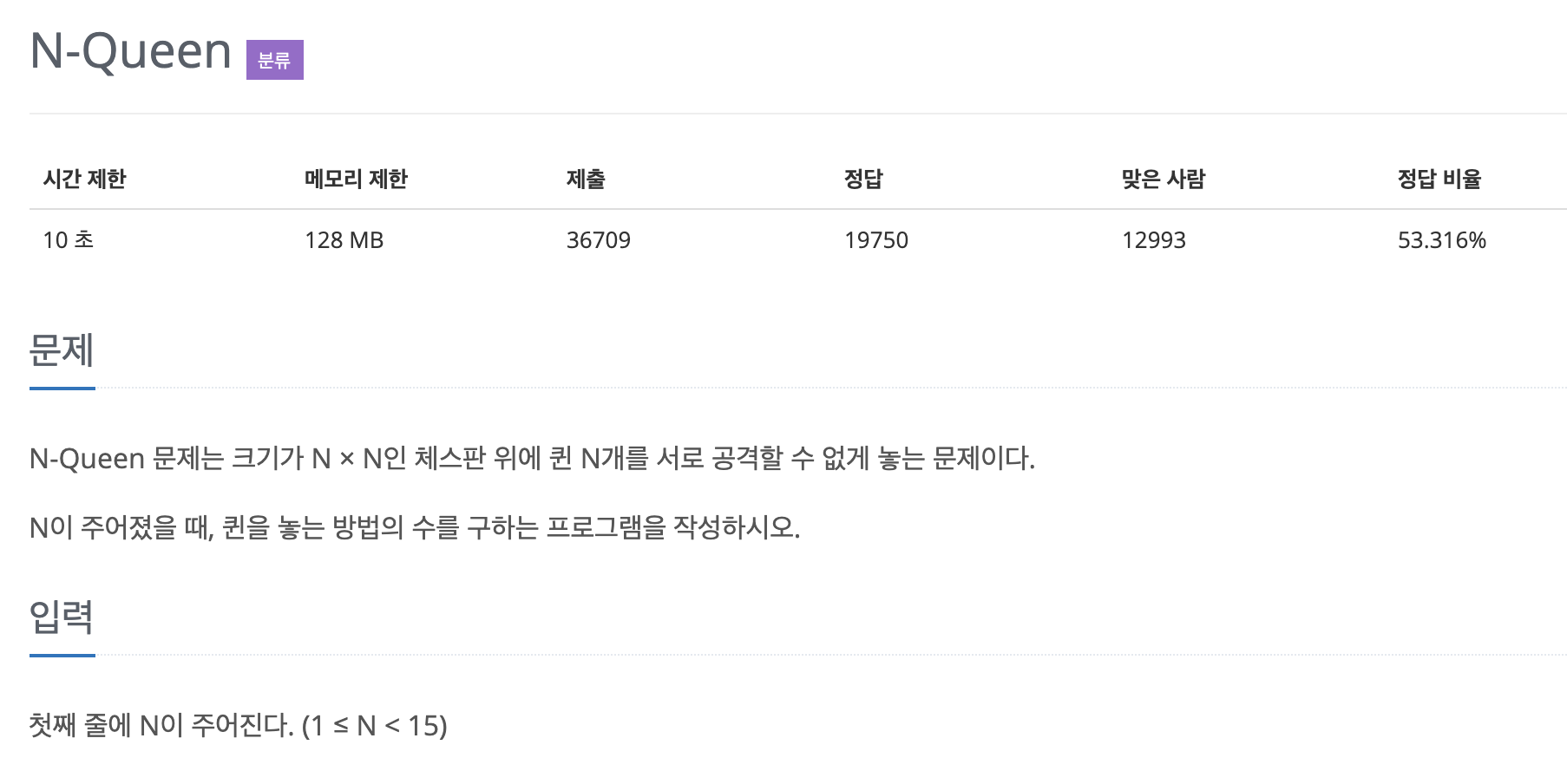Baekjoon Online Judge
algorithm practice
단계별 문제풀기
13. 백트래킹
모든 경우를 탐색하는 백트래킹 알고리즘을 배워 봅시다.
Java / Python
5. N-Queen
조금 더 복잡한 백트래킹 문제 1
- Java
import java.util.Scanner;
public class Main {
public static int N;
public static int[] arr;
public static int result = 0;
public static void main(String[] args) {
Scanner sc = new Scanner(System.in);
N = sc.nextInt();
arr = new int[N];
sc.close();
nQueen(0);
System.out.println(result);
}
public static void nQueen(int depth) {
if (depth == N) { // 모든 원소가 채워진 상태 경우 result 증가, return
result++;
return;
}
for (int i = 0; i < N; i++) {
arr[depth] = i;
if (Possibility(depth)) { // 퀸을 놓을 수 있는 위치의 경우 재귀호출
nQueen(depth + 1);
}
}
}
public static boolean Possibility(int col) {
for (int i = 0; i < col; i++) {
if (arr[col] == arr[i]) { // 같은 행에 존재할 경우
return false;
} else if (Math.abs(col - i) == Math.abs(arr[col] - arr[i])) {
return false;
} // 대각선상에 놓여있는 경우
// (열의 차와 행의 차가 같을 경우가 대각선에 놓여있는 경우
}
return true;
}
}자바의 경우 재귀호출함수부분과 조건을 확인하는 함수를 다르게 작성했습니다.
- Python (PyPy3)
Python의 경우 이번 예제에서 거의 계속 시간 초과의 문제가 있었습니다. 찾아보니, PyPy3가 일부 Python 프로그램의 경우 몇 배나 빠른 Python 인터프리터 대체 도구로, Python으로 계속 시간초과가 된다면, PyPy3를 이용하라는 말이 많아서, PyPy3로 언어를 설정하고 수행했습니다.
import sys
def nqueen(idx):
global N, col, slash, backSlash, result
if idx == N:
result += 1
return
for j in range(N):
if not (col[j] or slash[idx + j] or backSlash[idx - j + N - 1]):
col[j] = slash[idx + j] = backSlash[idx - j + N - 1] = True
nqueen(idx + 1)
col[j] = slash[idx + j] = backSlash[idx - j + N - 1] = False
N = int(sys.stdin.readline())
col, slash, backSlash = [False] * N, [False] * (2 * N - 1), [False] * (2 * N - 1)
result = 0
nqueen(0)
print(result)백트래킹에 대해서도 자세히 정리하려고 합니다.
제 경우에는 처음에 갑자기 난이도가 좀 높아진 느낌이었는데, 자바 코드 작성할 때 친절하게 설명해주신 사이트를 참고해서, 덕분에 이해하고 그런 방식으로 작성했습니다! 공부를 더 많이 해야겠습니다ㅠㅠ

